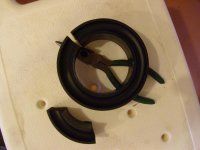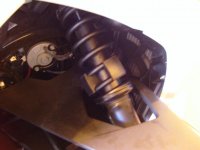Think of it this way. If you removed the shocks and installed a solid bar in their place, how much lean, sway, dive would you get?
ZERO!
But your dentures would fall out and your head would hurt from your eyeballs bouncing around. Think, riding on a lawnmower or tractor over bumpy ground.
Ergo, the hydraulic shock was invented.
So, if the shock spring is set very soft, your ride is very comfy, but you sacrifice handling in the form of a great deal of lean, sway and dive. Though you can reduce lean, etc., with the spring setting adjustment, that is not primarily what the spring adjustment is for. Spring adjustment is provided to maintain ride height when you load the Spyder, not to fix lean issues.
You can stiffen up your shock springs to counter this unwanted lean, (effectively getting closer to the steel bar scenario), but you'll sacrifice some ride comfort. The purpose of a shock is to reach that happy medium of reasonably good ride and reasonably good handling.
But shocks can provide only so much of either. Any improvement in one aspect is always at the expense of the other.
So, how can we achieve more of what we want (better handling) and still have a great ride? Better shocks (i.e. Elka) can provide this to a certain degree. But one component is rarely the complete answer, especially when it comes to suspension.
The Sway Bar was invented, (or, more accurately, the Anti-Sway bar), to assist the shocks in resisting sway, lean and dive without increasing harshness of ride. Because the sway bar has no affect on the suspension (shocks/springs included) when running straight, you can maintain your cushy spring setting without the negative aspects encountered in turns, crosswinds, etc. Because when you turn, the sway bar jumps in and takes care of the unwanted sway, lean and dive.
So, you can have your cake and eat it too! :thumbup:



